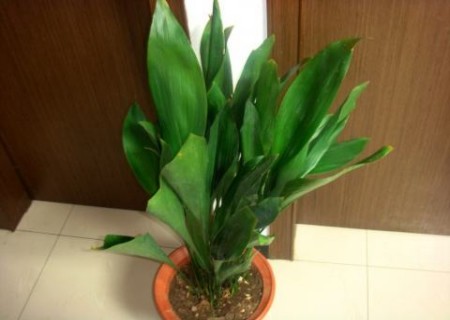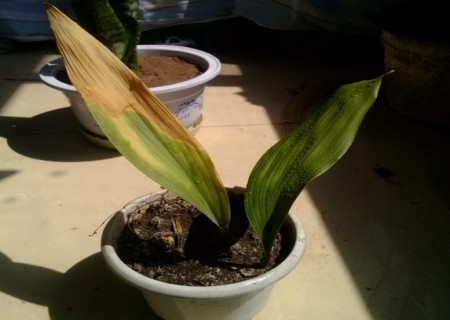Cultivation method of potted bottle orchid
Wine bottle orchid, as a flower with ornamental stems and leaves, uses it to decorate the living room, study room, hotel and venue, all of which give people a novel and chic feeling. It can be planted in a variety of specifications as interior decoration: small plants are planted in exquisite pots and placed on the desk and table, showing elegance and elegance; medium and large potted plants are used to decorate halls, conference rooms, reception rooms, hotels, shopping malls and other places, which are very tropical and enjoyable. So, how to raise potted wine bottle orchids?
The culture method of wine bottle orchid:
1, soil: wine bottle orchid resistant to barren, drought, good soil drainage, suitable for growing in sandy soil containing humus, the matrix can be mixed with garden soil, rotten leaf soil, river sand according to 1:2:1, plus a little plant ash, can also be mixed with fertile garden soil and cinder at 3:1, and then add a little chicken dung or bean cake.
2, temperature: like warmth, the temperature is 20: 28 ℃ is better, can survive in the high temperature of 33 ℃, not cold-resistant, not long below 13 ℃, winter temperature should not be below 10 ℃, lest the base rot to death.
3. Humidity: the wine bottle orchid prefers a humid climate, and the relative temperature of the growing air is 70-80%. If the humidity is too low, the lower leaves will yellowing and fall off, while the upper leaves will not be glossy.
4. Lighting: wine bottle Lan Xi Guang, but also resistant to a certain amount of shade. The lack of light will make the leaves of the plant thin and weak, which is not conducive to the growth of the plant. Need to receive enough light in spring, winter and autumn, and cover more than half of the shade in summer to prevent the leaves from turning yellow and scorching. For uniform light to facilitate shaping, it is best to turn 180 °basin regularly every 4-6 weeks.
5. Moisture: like humidity, the surrounding air humidity should be controlled at 70% to 80%, so as not to cause leaves to yellowing and falling off, and dim light affects the overall observability. Because the stout stem is easy to store water, it is resistant to drought and can grow without watering for 6 months. Watering to grasp the humidity, can be slightly dry, not stagnant water, so as not to rot the rhizome. Watering should be reduced in late autumn and winter.
5. Fertilization: generally apply compound fertilizer or liquid fertilizer to accelerate the expansion of the base of the stem. Except for winter, fertilizer can be applied every 2 to 3 weeks in the other three seasons, phosphorus and potassium fertilizer should be added, and the ratio of nitrogen, phosphorus and potassium should be controlled at 5:10:5. In addition, burying 3 holes (7 to 10 grains per hole) in the basin soil can promote the growth of cooked soybeans, which are evenly distributed and far away from the roots.
6. Diseases and insect pests: the wine bottle orchid occasionally has leaf spot disease, which can be improved by spraying Bordeaux solution with 1-100 Bordeaux every 15 days. The main pests are whitefly, bug bug and scale insect, which are sprayed by 1500 times of omethoate emulsion.
Culture skills:
1. Sunshine and temperature: sunshine must be sufficient and cold tolerance is better than other foliage plants, but it must be moved indoors in winter and the temperature must be kept above 10 ℃.
2. Culture soil: like cactus plants, it should be planted in culture soil with good drainage. Take sandy loam as the main soil, and add 20% Mui 30% rotten leaf soil.
3. Fertilizer: during the summer growth period, two times of mature soybean cake water or oil meal should be applied.
4. Watering: watering with a small amount of water is appropriate, but cannot be cut off. because the plant grows very fast, it needs to be watered more than once a day in summer and dry climates. when watering, pay special attention not to be too wet to avoid root rot.
5. Propagation and transplantation: generally, the seeds are propagated by sowing method, and the seeds are placed in a shallow basin with fertile sandy loam. Wine bottle orchid grows slowly and is not easy to bear fruit, so it must be transplanted every 2-3 years.
Summer maintenance:
1. Strengthen the air convection so that the temperature in the body can be released.
2. Put it in the semi-shade, or give it 50% shade
3. Spray it properly, 2 or 3 times a day.
Culture methods and points for attention of wine bottle orchid A brief introduction to the function of wine bottle orchid
Winter maintenance:
1. Move to a brightly lit place for maintenance
2. Outside, you can wrap it with a film to survive the winter, but uncover the film every two days when the temperature is high at noon to let it breathe.
3. Sufficient sunshine can be given in autumn, winter and spring, but more than 50% shade in summer. Put in indoor maintenance, as far as possible in places with bright light, such as well-lit living room, bedroom, study and other places. After indoor maintenance for a period of time (about a month), it should be moved to an outdoor place with shade (heat preservation in winter) for a period of time (about a month), so alternately.
Time: 2019-05-31 Click:
- Prev

Culture methods and matters needing attention of potted Cymbidium
The orchid is tall and straight in shape, bright and green in color, graceful, elegant and graceful; at the same time, it is strong, adaptable and extremely shady, so it is an excellent shade-loving foliage plant for indoor greening and decoration. It is suitable for home and office layout. Can be watched alone.
- Next

What if the leaves of a potted orchid turn yellow?
Foliage plants always give people the feeling of life and vitality, because they are basically green, green represents vitality, is the color of nature in spring, which is also the reason why most home offices have potted green plants. But in the daily maintenance, it is inevitable to encounter the symptoms of yellowing of green leaves.
Related
- Fuxing push coffee new agricultural production and marketing class: lack of small-scale processing plants
- Jujube rice field leisure farm deep ploughing Yilan for five years to create a space for organic food and play
- Nongyu Farm-A trial of organic papaya for brave women with advanced technology
- Four points for attention in the prevention and control of diseases and insect pests of edible fungi
- How to add nutrient solution to Edible Fungi
- Is there any good way to control edible fungus mites?
- Open Inoculation Technology of Edible Fungi
- Is there any clever way to use fertilizer for edible fungus in winter?
- What agents are used to kill the pathogens of edible fungi in the mushroom shed?
- Rapid drying of Edible Fungi

